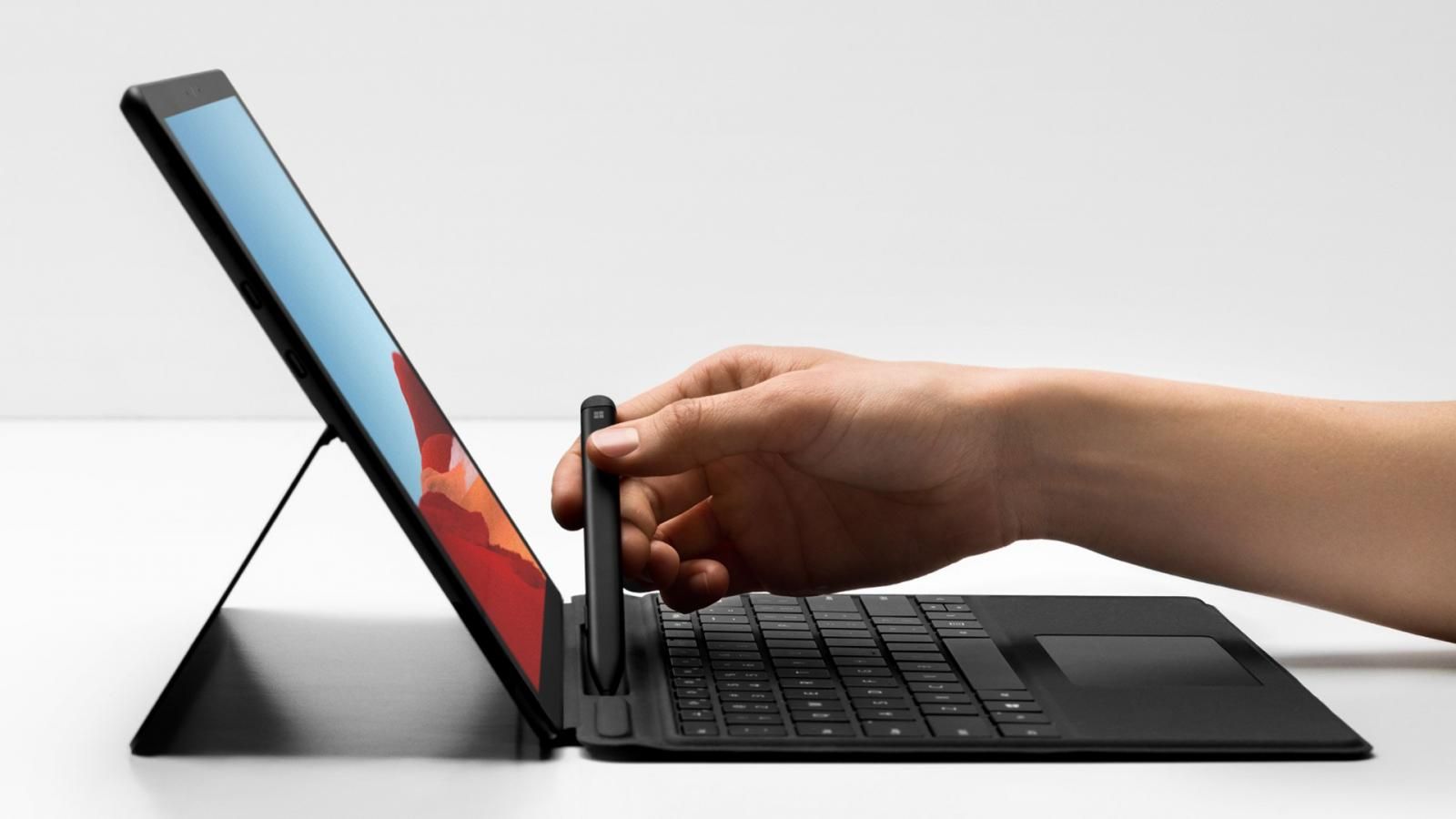Microsoft’s sexiest convertible yet – the Surface Pro X – is almost a year old now, which means an updated model is on the horizon going by the company’s launch cycle. Well, it appears that a Surface Pro X refresh is indeed in the pipeline and might debut as early as next month. As per a Windows Central report, the forthcoming Surface Pro X model will be based on the new Microsoft SQ2 chip, which is likely an upgraded model that succeeds the SQ1 silicon powering the first-gen Surface Pro X.
We don’t have any details about the performance boost the new chip offers, but it will reportedly be based on Qualcomm’s freshly-announced Snapdragon 8cx Gen 2 5G SoC for always-connected thin and light laptops. And since the first-gen Surface Pro X offered 4G LTE support, there is a chance that Microsoft might jump the 5G bandwagon, now that 5G-ready Windows laptops have already been announced.
The report adds that Microsoft will offer the Surface Pro X refresh in a new platinum color as well, instead of a single matte black shade seen on its predecessor. Additionally, the company will also sell the Type Cover in multiple new colors to match those for the vanilla Surface 2-in-1 and its Pro sibling. The second-gen Surface Pro X will reportedly debut in October alongside a new Surface-branded laptop targeted at students that will feature a 12.5-inch display and will cost less than $600. With the arrival of new Surface Pro X hardware, Microsoft is reportedly adding the ability to run 64-bit Windows apps via emulation.
To recall, the Surface Pro X was widely acclaimed for its design, but app availability issues that come with Windows on ARM proved to be the biggest drawback. That is because the Surface Pro X was unable to run 64-bit x86 apps, the architecture used by Intel or AMD for their respective processors that are found inside almost every PC around you. The ARM architecture used by Qualcomm chips doesn’t support 64-bit x86 apps, so the Surface Pro X couldn’t run them. However, offering a solution via 64-bit app emulation might solve the problem and give the device another chance at glory.

